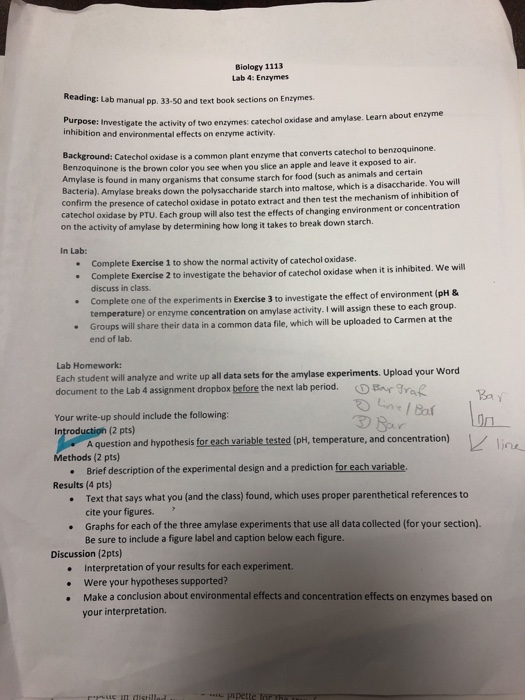Environmental Science Lab Manual Answers
- Environmental Science 1401 Lab Manual Answers
- Environmental Science 1401 Lab Manual Exploring The Environment Answers
- Environmental Science 1401 Lab Manual Answers
- Microbiology Lab Manual Answers
- Activities In Environmental Science Lab Manual Answers
The lab manual is used in college freshman environmental science classes, both 1 and 2 semester courses, as well as in high school AP environmental science classes. Its table of contents can be viewed on the Full Lab Manual web page along with two Sample Labs to give an idea of the way topics are covered. Laboratory Title: Environmental Engineering Laboratory Code: 10CVL7 7 Total Contact Hours: 42 Duration of SEE: 03 Hours IA Marks: 25 Marks SEE Marks: 50 Marks Lab Manual Author: Dr. Shanthala B Prof. Mithesh Kumar Prof. LABORATORYOBJECTIVES This Laboratory experiments cover the examination of waters of a wide range of.
- Come to know the application of this laboratory in future endeavoring civil engineering projects. The Environmental Engineering Laboratory helps the student to understand the test procedures and it will helpful to them in the field practices. This laboratory manual also contains the sample viva voce questions and sample.
- The National Institute of Open Schooling (NIOS) formerly known as National Open School (NOS) was established in November 1989 as an autonomous organization in pursuance of National Policy on Education 1986 by the Ministry of Human Resource Development (MHRD), Government of India.
9.1 Introduction
Forests globally have been disappearing at an alarming rate. These losses have had major consequences for Earth’s climate, biogeochemical and water cycles, and biodiversity. While deforestation and forest degradation are a global phenomenon, the loss of tropical forests has been particularly pronounced. For example, one of the most extensively forested countries in the world, and the focus of our assignment here, is Brazil: a country that has seen major forest loss within the Amazonian forest region over the past several decades.
One of the main causes of deforestation globally, and in Brazil particularly, is agricultural expansion: the conversion of natural forested landscapes into food production systems. Agricultural expansion can occur for multiple reasons, including subsistence livelihoods (i.e., small scale agriculture), though major forest loss is commonly attributable to very large-scale industrial agriculture. In the case of Brazil, two primary agricultural land-uses – namely cattle and soybean production – are a major cause of deforestation.
Using Brazil as an example, this lab will introduce students to open access data sources that are available to evaluate 1) patterns of land-use change that are unfolding within countries and across the globe. Based on Microsoft Excel software, we will use this open access data to 2) understand and quantify how both forest land and agricultural land have changed in Brazil over the past 25 years; and 3) understand the role that expansion of cattle and soy farms have played in driving these changes.
Assignment 4 is 27 marks total – worth 15% of your final grade.
This is your FINAL LAB ASSIGNMENT. Please submit a pdf version of your assignment on Quercus under “Lab 4 submission”. Your lab 4 assignment is due by Friday November 20, 4:00 pm.
Summary
Course URL: cas.umkc.edu/geo/env-sci/start/contents.htm
Environmental Science 1401 Lab Manual Answers
Course Type: Intro Level Environmental Geology
Course Size:
Course Format:
Institution Type
 :
: Course Context:
This is an introductory laboratory course with no pre-requisites, and does not serve as a prerequisite for other courses. Typically, over 150 students enroll for this course each semester with 80% of the students taking the course to satisfy a general education requirement. This lab should preferably be taken in the same semester as the Environmental Science 110 Lecture, but students can take it alone. Each lab section contains 15 students.In your department, do majors and non-majors take separate introductory courses? no
If students take a 'non-majors' course, and then decide to become a major, do they have to go back and take an additional introductory course? yes

Course Content:

Environmental Science 1401 Lab Manual Exploring The Environment Answers
Course Goals:
By the end of this course, students will be able to:- Apply basic scientific principles to address environmental science issues
- Gather and analyze information relevant to environmental science problems and communicate analysis to others
- Develop professional writing skills
- Be able to think critically
- Develop map-making abilities
- Become proficient at graphing
- Express concepts in their own words
- Adopt a positive attitude toward science
- Develop awareness of how personal choices affect other people, other species, and planet earth in general
- Develop a sense of stewardship of the earth
- Work cooperatively in groups
Course Features:
Environmental Science 1401 Lab Manual Answers
Course Philosophy:
Assessment:
- Laboratory activities
- Mock quizzes, regularly administered to gauge students' understanding of basic scientific concepts. The results of these mock quizzes do not count towards students' final grade. They are solely to ensure no child is left behind.
- Two major quizzes
- Mini-journal research papers